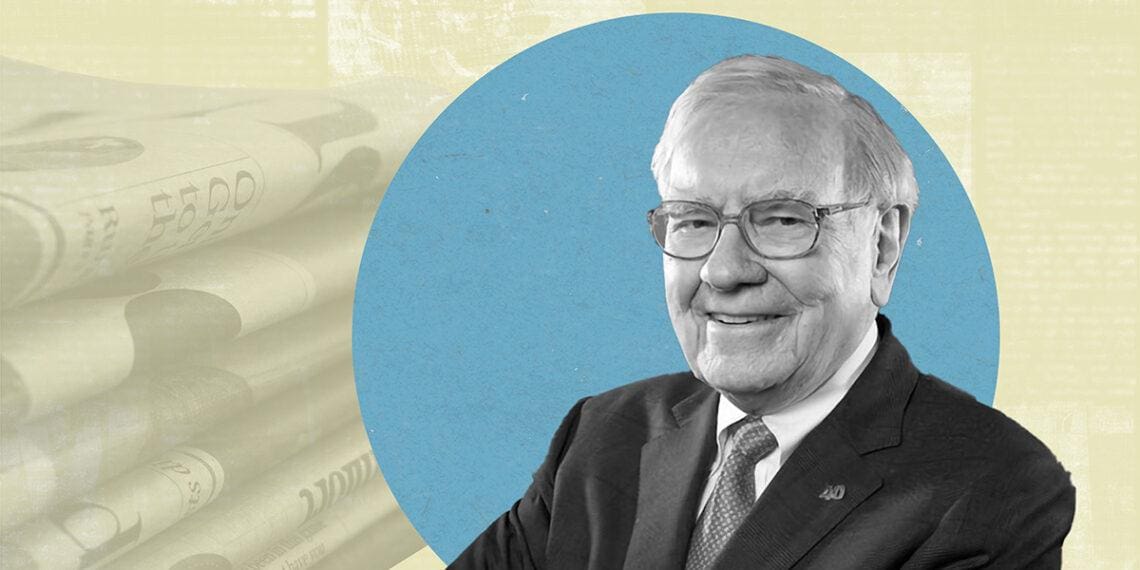Like a golden ticket to success, a sterling reputation opens doors, attracts talent and keeps investors smiling. But in an era of instant news and viral scandals, how do companies safeguard this priceless asset? From boardroom strategies to crisis management, Protiviti’s Jim DeLoach unveils 12 essential keys that separate reputation champs from corporate cautionary tales in a game where one misstep can erase decades of goodwill.
A strong, differentiating and positive reputation is one of an organization’s most prized possessions. Serving as a magnet for customers, employees, investors and ecosystem partners, it empowers those who represent the organization with a voice on matters relevant to the company’s market permission. A strong reputation reflects credibility, integrity and trust. Strengthened by superior performance and competitive positioning relative to peers, it precedes itself by engendering confidence that the organization believes in fair play, does things right and strives to do the right things.
A prerequisite when doing business, a strong reputation is like a premium ticket to a Taylor Swift concert — without it, you can’t get the best seat in the arena. Respected organizations are typically transparent internally and externally with stakeholders, have robust financial practices, are consistent in their corporate messaging, demonstrate world-class reaction to an unexpected crisis and are noted for their exceptional employee relations, ethical behavior and compliance with laws and regulations. The most innovative companies invariably draw the most respect in disruptive markets.
Reputation is all about how stakeholders perceive the company. It takes years to build but can be lost in a matter of days, weeks or years, depending on the nature, velocity and persistence of the events that impair it. I am not in the game of naming companies, because I am confident that readers already are familiar with organizations that have stepped over the line and suffered, or are currently suffering, the consequences of actions that tarnished their reputation and brand image.
It is unfortunate that it happens all too frequently. The downward spiral of a once-proud organization that has suffered severe reputation impairment is not pleasant to watch. The muddy road such organizations must slog to recapture the esteem and respect they once enjoyed can be long and arduous.
An author I respect highly defines reputation risk simply as “the loss of the value of a brand or the ability of an organization to persuade.” To frame the value proposition of preserving reputation: When impaired, it can lead to a decline in market value and act as a repellent, resulting in loss of customers, inability to attract new customers, increased challenges in acquiring and retaining talent, headwinds in attracting capital and difficulty in attracting and sustaining partnerships and alliances. Events impairing reputation often result in a persistent headline effect, inviting heightened media scrutiny that further fans the flames.
Seven years ago, I published an article on managing reputation risk. Given the timelessness of this topic, I have updated this discussion by exploring 12 more essential keys for leaders to consider when managing reputation. I classify these keys under five critical areas — strategic alignment, cultural alignment, quality commitment, operational focus and organizational resiliency.
When in Doubt, Apply Warren Buffett’s Newspaper Test
When making decisions, transparency and potential consequences are powerful influencers. For directors and CEOs — as well as for their personal brands — this is a key question: What will decision makers in their organization do in critical situations when no one is watching?
Read moreDetailsStrategic alignment
Effective board oversight
Reputation risk management starts at the top. Strong board oversight on matters of strategy, policy, execution and transparent reporting is vital to effective corporate governance and the ultimate checkpoint on CEO performance. The board’s oversight of risk is important because effective identification and management of risk can identify major threats to reputation and ensure that action is taken in a timely manner to reduce them to an acceptable level.
Integration of risk into strategy setting and business planning
The board and executive management should integrate risk into strategy setting and business planning to ensure it is a relevant factor in decision-making. This integration facilitates a strategic view of risk, intersects risk management with performance management and helps make the strategy more robust. Directors and executives should understand and challenge the critical assumptions underlying the strategy, considering scenarios that could invalidate these assumptions. Management should also define the inherent soft spots, incongruities and growth drivers impacting the business plan’s execution.
Effective communications, image and brand building
Effective brand building is crucial for market success and enhances a company’s reputation. Companies must focus on customer needs, understand their value proposition, develop strong messaging and align their processes with their brand promise. Continuous improvement, accountability for results, data-driven decision-making and effective use of social media are also essential. Effective communications are also essential for preserving reputation and building brand image. They help establish trust, shape perceptions, manage expectations, navigate crises, engage stakeholders, highlight differentiating value propositions, facilitate change, promote culture and values and foster strong customer relationships and employee morale. Positive media coverage is influenced by all of these efforts as well as by good marks on the other keys to managing reputation.
Cultural alignment
Strong corporate values, supported by appropriate performance incentives
The right values and incentives are crucial for shaping and influencing corporate culture. Lower-level employees often pay more attention to their supervisory middle managers than to the organization’s leaders. Boards need to ensure that executive management implements a strong tone at the top and assesses periodically whether the tone in the middle and at the bottom are aligned accordingly. Executives and directors should also pay attention to warning signs by the independent risk management function and in audit reports evidencing the possibility of dysfunctional behavior.
A workforce skilled for success
Reskilling and upskilling the workforce is essential for companies to stay competitive and address talent shortages. The companies that do it best are the ones most likely to differentiate themselves as great places to work and prepare themselves for future needs as the labor market shifts and digital technologies alter job functions. Skilling involves inventorying current talent assets, mapping them to business objectives and filling gaps through targeted training programs. Continuous improvement through individualized development plans, mentoring, job rotation and feedback processes is crucial.
Positive culture regarding compliance with laws, regulations and internal policies
Few incidents undermine reputation more than serious compliance violations, with the attendant headline effect of the brand being dragged through the mud by the media. Senior executives, with board oversight, should ensure effective internal controls over compliance matters. They must demonstrate commitment to compliance by maintaining strong compliance administration and oversight, conducting periodic risk assessments, refreshing compliance programs to reflect new regulatory developments, monitoring third-party dealings, implementing robust training and effective escalatory processes and ensuring proper documentation. Additionally, effective auditing and monitoring capabilities should be in place to evaluate compliance effectiveness.
Quality commitment
Priority focus on positive interactions with stakeholders
The executive team and the board of directors should ensure that there is a passionate focus on improving stakeholder experiences. These experiences are the accumulation of day-to-day interactions among customers, employees, suppliers, regulators, shareholders and lenders. By internalizing and acting on these interactions, companies can improve and sustain their reputation. Organizations that align company goals with sustaining customer loyalty and ensure a differentiating experience for customers will stand out in the marketplace.
Quality public reporting
When public companies restate previously issued financial statements for egregious errors in the application of accounting principles or omission or misuse of facts, investors and other stakeholders notice. For companies contemplating an initial public offering, a well-designed financial close process, effectively functioning internal financial reporting controls, and an understanding of what and what not to say when talking with the press and the investor community are important. Vigilance in ensuring accurate financial statements, effective internal controls and proper disclosure procedures amounts to table stakes for companies seeking to preserve a strong reputation. Once lost, public confidence in a company’s reporting is difficult to regain. These points suggest that a strong audit committee is an imperative.
Operational focus
Strong control environment
A critical component of internal control, the control environment is essential for achieving an organization’s operational, compliance and reporting objectives. It includes management’s commitment to integrity and ethical values, board oversight, organizational structure, and processes for attracting, developing and retaining competent people. Setting appropriate performance measures, incentives and rewards drives accountability for desired results. Boards and senior executives should expect and demand a strong control environment to avoid embarrassing control breakdowns that can tarnish reputation.
Company performance relative to competitors
The market likes to keep score. A company’s performance relative to its peers is the primary driver of capital flows from investors and lenders. Market recognition of success validates the company and its management team. Differentiating strategies, distinctive products, proprietary systems and innovative processes contribute to superior performance in quality, time, cost, innovation, talent management and customer fulfillment. All of these things feed company reputations. By contrast, significant performance gaps compared to competitors can harm reputation if not addressed over time. These factors should heavily influence the board’s and the executive team’s evaluation of company performance.
Organizational resiliency
World-class response to a high-profile crisis
No company on the planet is immune to a potential crisis. Eventually, every company is tested. Crisis management preparation follows risk assessment, especially for high-impact events. Executive management, under the board’s oversight, should ensure that the risk assessment process identifies areas that require response readiness. Without a prepared crisis management team, rapid response is impossible. Fires cannot be fought with a committee. Response teams need robust communication plans that emphasize transparency, straight talk and effective social media use. The response team should periodically update and test the rapid response plan.
Liquidity management
While the time-honored phrase, “Cash is king,” is relevant from time to time, a more fitting phrase in today’s optics might be, “Liquidity is a prerequisite to resiliency.” Effective liquidity management is crucial for companies to meet debt obligations, buffer against uncertainties, ensure operational continuity during crises, provide flexibility to undertake strategic investments and reduce bankruptcy risks. Financial risks related to capital structure, debt levels and liquidity are significant to investors and lenders. Companies with sufficient funds to meet short-term obligations and operate smoothly during financial stress gain superior reputations with investors and creditors. Budgeting and forecasting processes support business plans and liquidity management, contributing to operational resilience and strategic agility.
Conclusion
Bottom line, reputation is a most precious but fragile organization asset. What takes decades to build can be lost in a matter of days and weeks. The CEO and the board own the ultimate responsibility to protect and preserve the enterprise’s reputation. The 12 keys discussed above offer a framework for addressing what’s really important when managing reputation risk. A strong focus on applying these keys can help leaders enhance and preserve a company’s standing in the marketplace.




 Jim DeLoach, a founding
Jim DeLoach, a founding 









